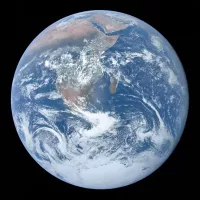Rain is a type of precipitation involving condensed water vapor falling due to gravity. A crucial part of the water cycle, it deposits most of Earth's freshwater, crucial for hydroelectricity, irrigation, and various ecosystems. Essentially, rain is a vital process for sustaining life and resources on our planet.
1900: Precipitation increase over land
From 1900 through 2005, precipitation generally increased over land north of 30°N. Over the contiguous United States, total annual precipitation increased at an average rate of 6.1 percent since 1900.
1950: Increase in heavy downpours
Analysis of rainfall records from 1950 to 2014 in the United States reveals an increase in heavy downpours since 1950. The largest increases are in the Northeast and Midwest, with Rhode Island showing the largest increase at 104%.
1974: Largest annual rainfall measured in Colombia
In 1974, Tutunendaó, Colombia received 26,303 mm (86 ft 3.6 in) of rainfall, the largest annual rainfall measured in Colombia.
1982: Record rainfall on Mount Waiʻaleʻale
In 1982, Mount Waiʻaleʻale on the island of Kauaʻi recorded 17,340 mm (683 in) of rain, contributing to its average annual rainfall of 9,500 mm (373 in) over the last 32 years.
2000: High rainfall recorded in Australia
In 2000, Mount Bellenden Ker in Australia recorded over 12,200 mm (480.3 in) of rain, contributing to its average annual rainfall of 8,000 mm (310 in), making it the wettest spot in Australia.
2004: Largest raindrops recorded
In 2004, the largest raindrops on Earth were recorded over Brazil and the Marshall Islands. Some of these raindrops were as large as 10 mm (0.39 in).
2005: Precipitation trends observed
From 1900 through 2005, precipitation generally increased over land north of 30°N but has declined over the tropics since the 1970s. In 2005, the trends varied widely by region and over time, with some areas becoming wetter and others drier.
2011: Days of Prayer for Rain in Texas
In 2011, during a period of drought, the State of Texas held Days of Prayer for Rain, reflecting the continued religious and cultural significance of rain.
2014: Increase in heavy downpours
Analysis of rainfall records from 1950 to 2014 in the United States reveals an increase in heavy downpours since 1950. The largest increases are in the Northeast and Midwest. The city with the largest increase is McAllen, Texas with 700%.
2022: PFAAs in rainwater exceeded safety standards
In 2022, levels of at least four perfluoroalkyl acids (PFAAs) in rainwater worldwide greatly exceeded the EPA's lifetime drinking water health advisories as well as comparable Danish, Dutch, and European Union safety standards, suggesting a planetary boundary for chemical pollution has been exceeded.
Mentioned in this timeline
The United States of America is a federal republic located...
Colombia officially the Republic of Colombia is a country located...
Australia officially the Commonwealth of Australia encompasses the Australian mainland...
Texas the second-largest US state by area and population is...
Brazil is the largest country in South America ranking fifth...

Earth the third planet from the Sun is unique in...
Trending

6 months ago Pulisic's Gold Cup Controversy: Donovan's Criticism and Pochettino's Stance on Game Selection

6 months ago Deontay Wilder returns to boxing against Tyrell Herndon, coached by Don House.

Chevy Chase born Cornelius Crane Chase is a prominent American comedian actor and writer His career took off with his...

8 months ago Dollywood's Spring Flower and Food Festival blooms; Dolly Parton tribute highlights park events.

2 months ago Kristen Bell and Adam Brody reunite in 'Nobody Wants This' Season 2!

25 days ago Katherine Schwarzenegger & Chris Pratt's Christmas Agreement Before Marriage Revealed: A Tradition!
Popular

XXXTentacion born Jahseh Dwayne Ricardo Onfroy was a controversial yet...

Ben Shapiro is a prominent American conservative political commentator media...

Candace Owens is an American conservative political commentator and author...

Stranger Things created by the Duffer Brothers is a popular...
The Kennedy Center Honors are annual awards recognizing individuals and...

William Franklin Graham III commonly known as Franklin Graham is...